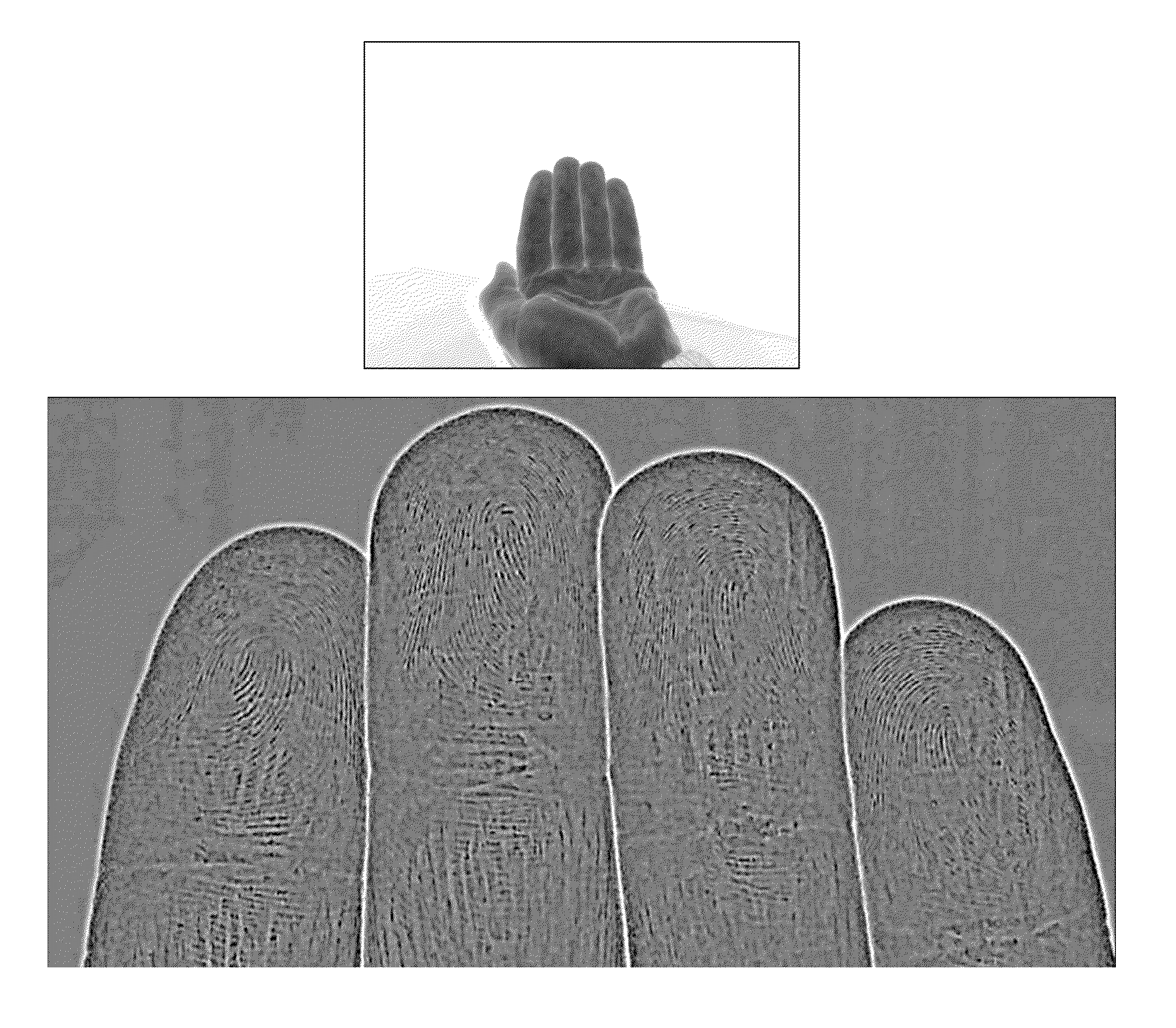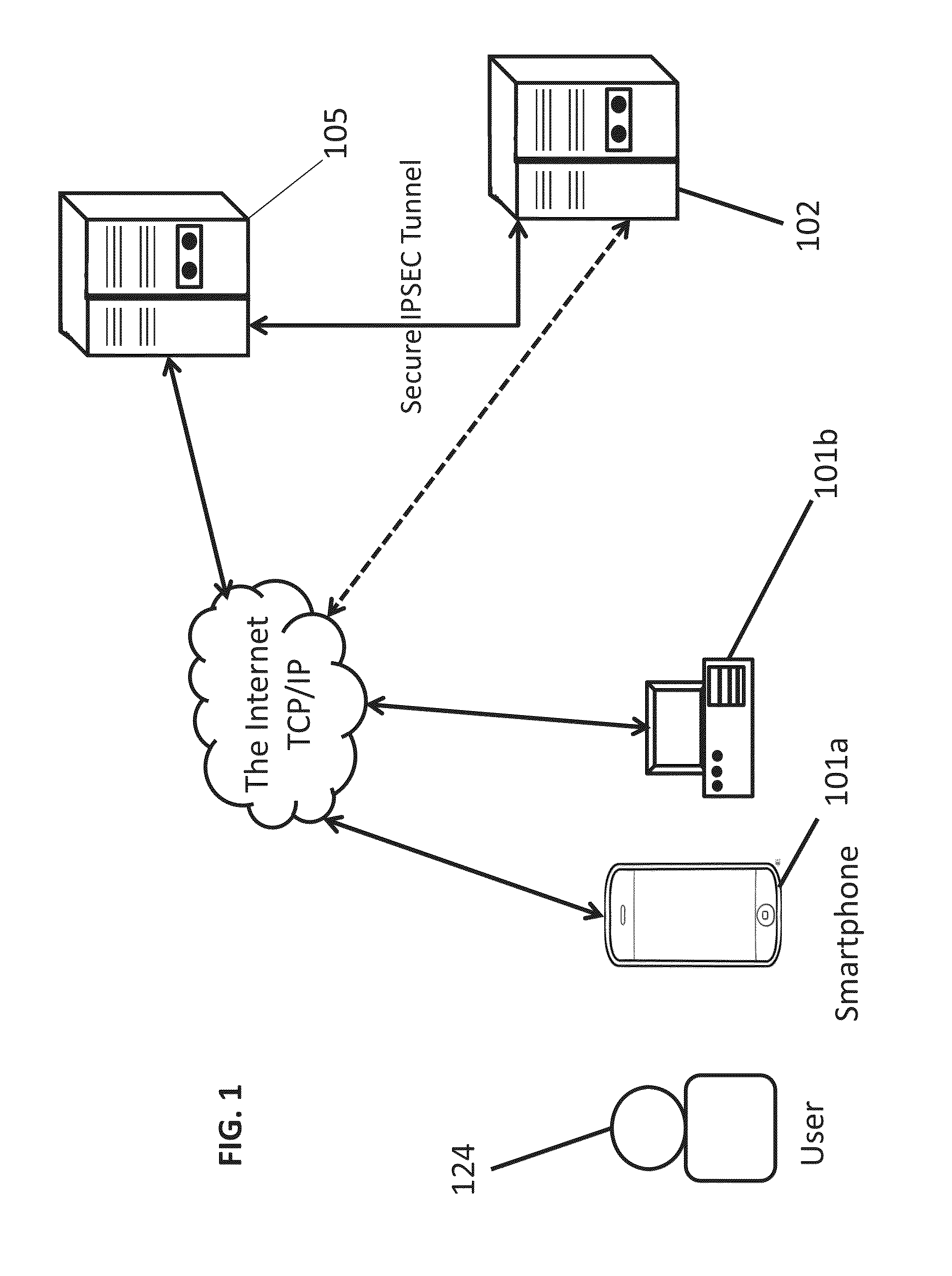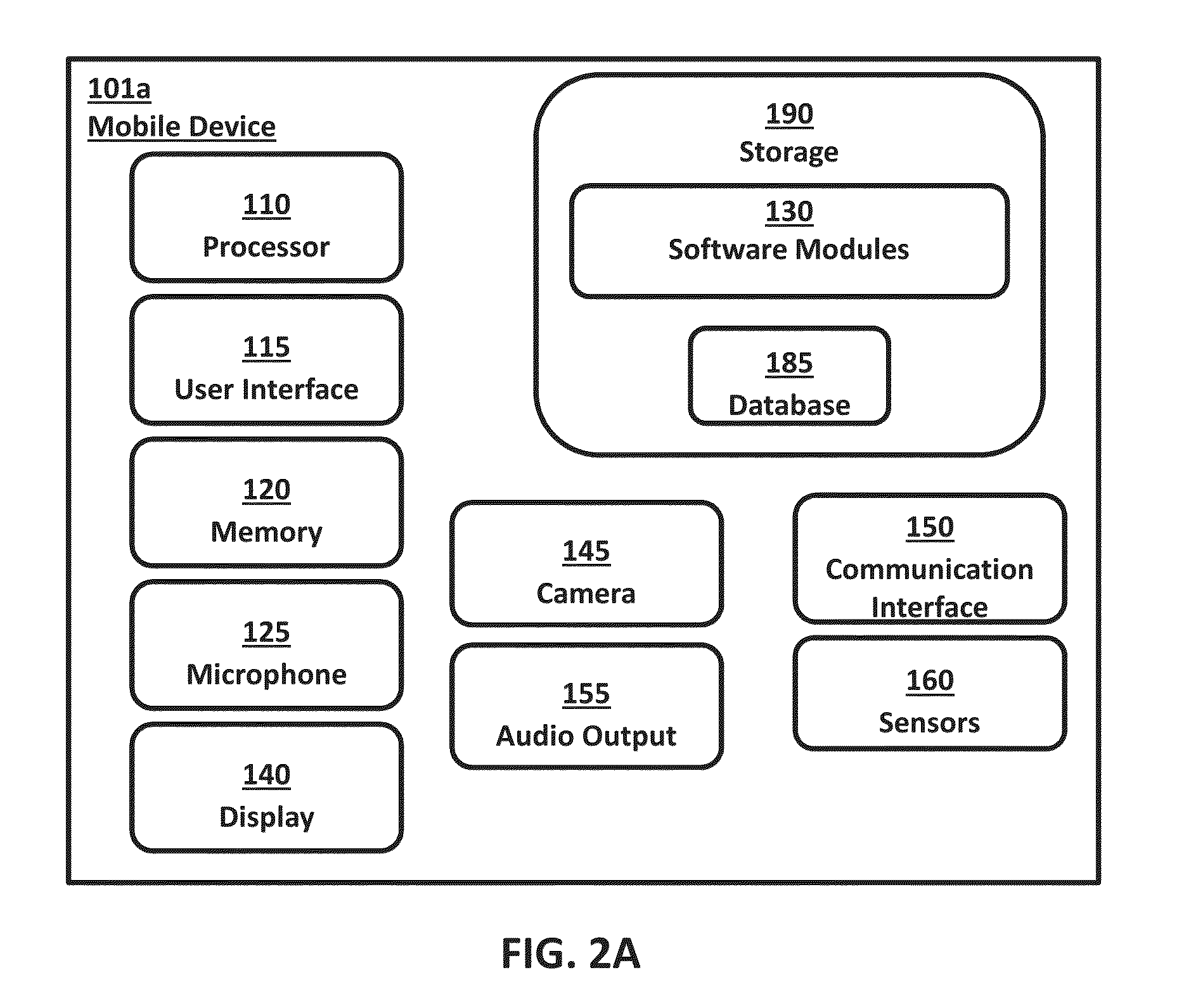Systems and methods for performing fingerprint based user authentication using imagery captured using mobile devices
a mobile device and user authentication technology, applied in the field of systems and methods for capturing and characterizing biometric features, can solve the problems of illegal adoption of newborns, affecting the adoption process, and being difficult to obtain biometrics,
- Summary
- Abstract
- Description
- Claims
- Application Information
AI Technical Summary
Benefits of technology
Problems solved by technology
Method used
Image
Examples
Embodiment Construction
[0033]By way of example only and for the purpose of overview and introduction, embodiments of the present invention are described below which concern a system and method for capturing a user's biometric features and generating an identifier characterizing the user's biometric features using a mobile device such as a smartphone. The biometric identifier is preferably generated using imagery captured of a plurality of fingers of a user for the purposes of authenticating / identifying the user according to the captured biometrics and determining the user's liveness. The present disclosure also describes additional techniques for preventing erroneous authentication caused by spoofing. In some examples, the anti-spoofing techniques may include capturing one or more images of a user's biometrics and analyzing the captured images for indications of liveness.
[0034]In some implementations, the system includes a cloud based system server platform that communicates with fixed PC's, servers, and ...
PUM
 Login to View More
Login to View More Abstract
Description
Claims
Application Information
 Login to View More
Login to View More - R&D
- Intellectual Property
- Life Sciences
- Materials
- Tech Scout
- Unparalleled Data Quality
- Higher Quality Content
- 60% Fewer Hallucinations
Browse by: Latest US Patents, China's latest patents, Technical Efficacy Thesaurus, Application Domain, Technology Topic, Popular Technical Reports.
© 2025 PatSnap. All rights reserved.Legal|Privacy policy|Modern Slavery Act Transparency Statement|Sitemap|About US| Contact US: help@patsnap.com



